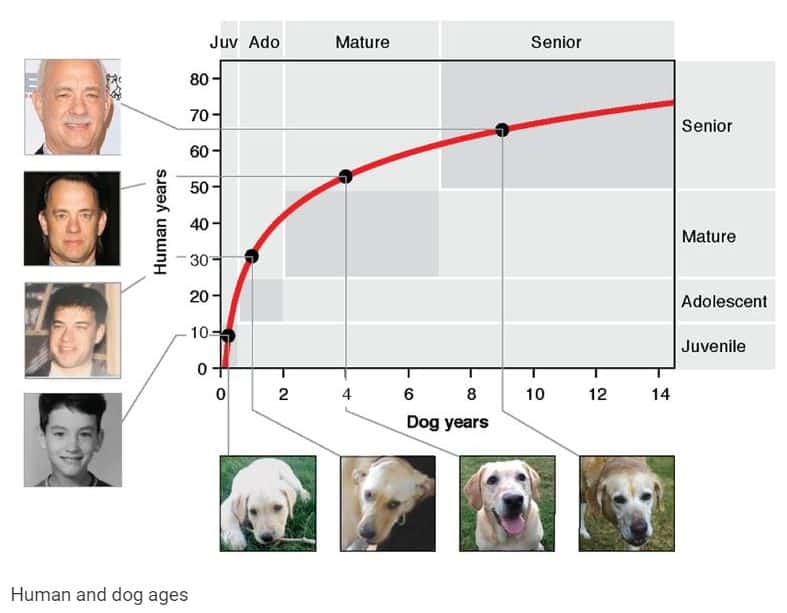Scientists have developed a new way to translate the age of dogs into humans: for this from the age of the dog will have to take a natural logarithm, multiply by 16 and add 31. This complex dependence was the result of comparing hours of methylation in dogs and humans. It also shows that dogs age faster in the first years of their lives and slower after four years.
The biological age of the body is not a physical indicator, but a statistical, i.e. relative health or proximity to the death of each individual compared to the entire population. One of the most accurate ways to calculate it is “methylation hours”: a set of areas of DNA on which methyl marks appear or disappear over time (epigenetic markers).
The first such watch was invented by Steve Horvath in 2013 – a list of 353 areas of DNA. Since then, there have been several variants of epigenetic clocks, each of which allows to predict the development of only a certain list of age-related diseases. But even more difficult was to align the hours of methylation for humans and animals, which are often used as models for disease studies or drug testing.
Tina Wang from the University of California and her colleagues have developed a way to translate the biological age of dogs into humans. To do this, they collected DNA samples from 104 Labrador retrievers from 0 to 16 years old. For comparison, the researchers used DNA samples from 320 people from 0 to 103 years old, which they collected during the development of human methylation clocks.
Scientists compared the DNA sites in which methylation changes with age in dogs and humans, and found – as one would expect, that older dogs resemble older people in terms of methylation and young dogs resemble young people. Apparently, both species have some conservative set of DNA regions that are methylated and demethylated over time.
The researchers then built a graph of the age of the dogs. And they found out that this dependence is continuous, but not linear. At the beginning of life, dogs very quickly “age” by human standards, but then the biological age arrives more slowly. The formula for the translation is as follows: human age = 16 ln (dog age) + 31, where ln is the natural logarithm.

Using this graph, scientists have seen that the key points in the life of both organisms coincide. For example, teeth begin to erupt at seven weeks (0.13 years) in dogs and at 9 months (0.75 years) in humans. And the average life expectancy is about 12 years for labradors and about 70 years for humans.
Scientists have collected a canine “methylation clock” samples from 439 DNA sites. And to make sure that these areas really matter for the lives of different mammals, they checked this watch on mice. The researchers took advantage of data from previous studies in which the epigenetic status of mice (i.e. the presence and absence of methyl tags on DNA) was measured at different ages and depending on various effects – for example, calorie restriction, which prolongs the life of mice. And even by dog standards, it turned out that mice on a restrictive diet grew older slowly.
This work has an important practical application. Since mice are very different from humans in either physiology or life expectancy, drugs to combat ageing are gradually beginning to be tested on dogs. For example, as part of the Dog Aging Project, scientists test rapamycin, one possible means of prolonging life. So far, its action has been tracked only by the development of characteristic age-related diseases, such as heart hypertrophy. And the methylation clock can track the movement of experimental animals along the ageing curve and project these results onto humans.
